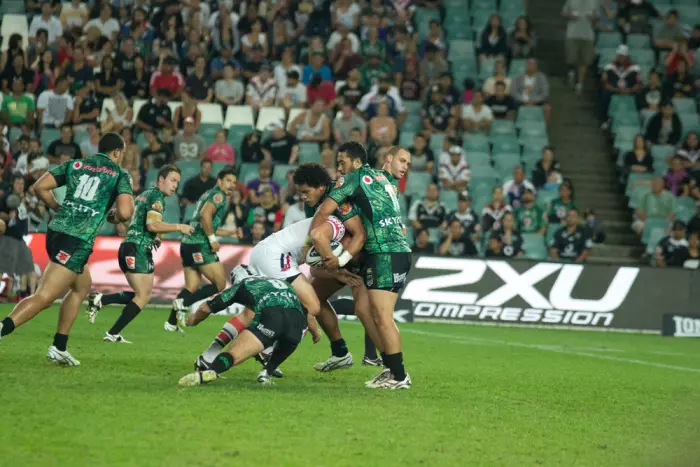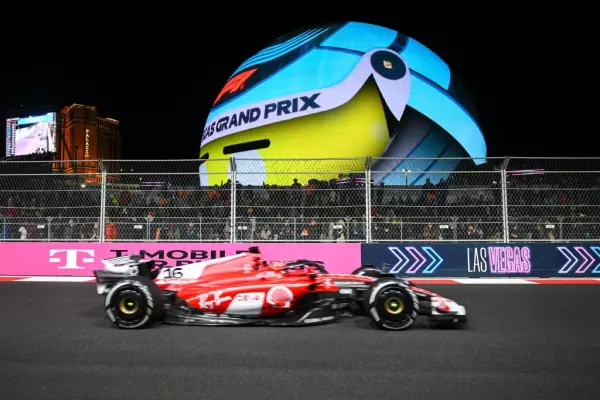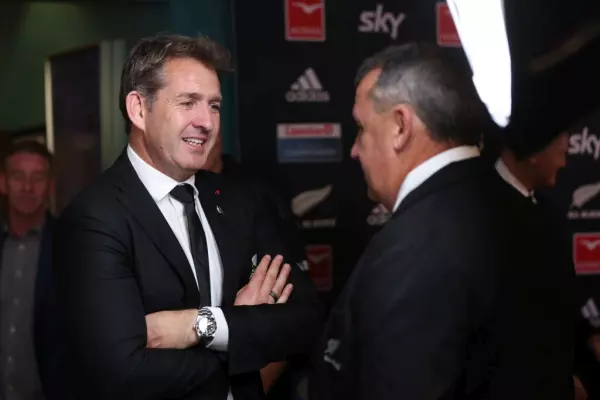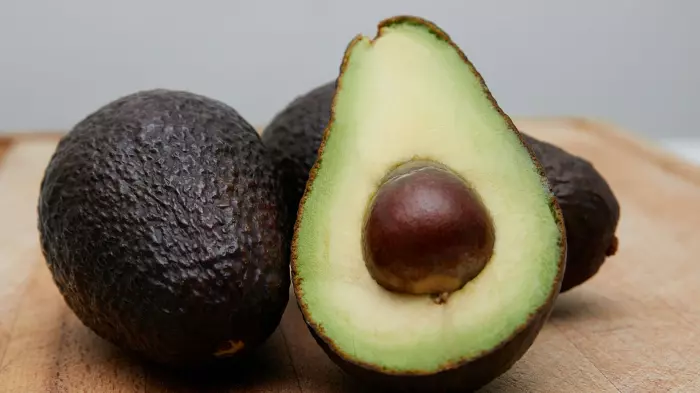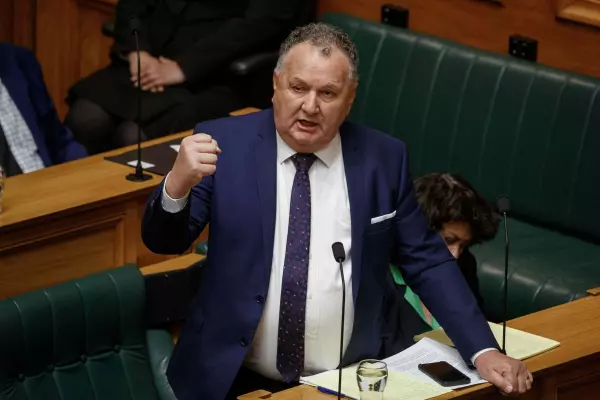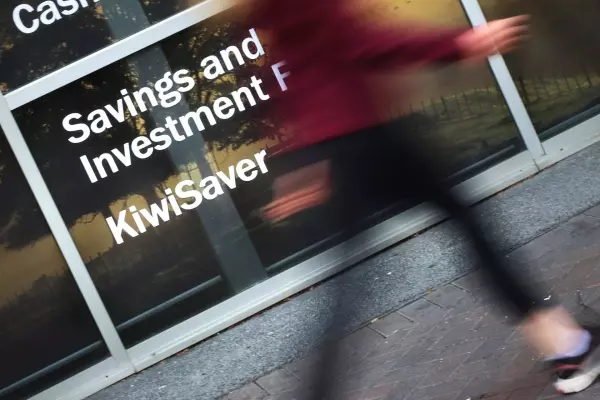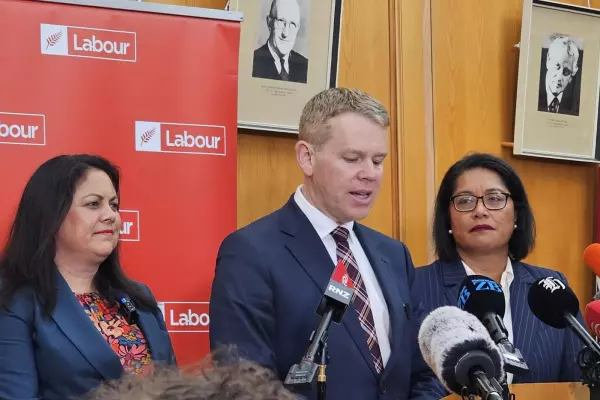There has long been a fascination over the “rugby versus league war” in this country.
In reality, ‘war’ is a mismatched descriptor on more than one count. Any ‘war’ has been totally dominated by the code of rugby union by virtue of the All Blacks and their paymasters in Wellington.
Sure, there’s been the odd decent border skirmish impacting on the fortunes of both. Nevermore than when Rupert Murdoch poured hundreds of millions of dollars into Australian rugby league in the mid-1990s, and knees suddenly started playing the cymbals at New Zealand Rugby.
There was a real possibility of the All Blacks losing a host of players to the Aussie league, including one Jonah Lomu, immediately after the 1995 World Cup.
And the hype around the birth of the Auckland-based Warriors franchise only supercharged the once crazy notion that the league might actually begin to make huge inroads into rugby’s popularity here.
In the end, it was a false dawn. Murdoch had bankrolled the rebel faction in the Super League battle.
But in typical Logan Roy-style, he was just as happy to fund the traditionalists (in this case the national unions of NZ, Australia and South Africa) in the rugby conflict that finally forced the code to turn professional, almost solely due to the league threat.
By buying into both sports, Murdoch’s dollars shelled out in return for precious pay-TV cargo, effectively cancelled out a looming international showdown between the two codes.
In New Zealand, the All Blacks then went on a tear in the new millennium while the Warriors floundered. NZ Rugby galloped off into the distance and league in this country resigned itself to returning to second cousin status (‘little brother’ tags don’t do justice to the gulf – at least in the eyes of rugby hard-heads).
And so it has been for more than a quarter of a century now. But could things finally be about to change?
Circle 2023
The year 2023 will be significant within NZ sport, marking year one of a renewed and intriguing battle for the hearts and minds of Kiwis who love their footy (and for ‘footy’, read rugby union and rugby league).
The National Rugby League’s (NRL) current Kiwi broadcasting deal lapses at the end of next season. And while there was the expectation of a Dutch auction with Spark Sport for the future Kiwi rights, Sky TV slipped under its rival’s guard and quietly sold the NRL on a fresh deal through to the end of 2027.
There is no doubt the new agreement represents the league’s most significant opportunity in New Zealand since ... well, since Super League.
The NRL's 5-point Kiwi war plan
- Capitalise on free-to-air TV coverage in New Zealand of selected showpiece games to grow awareness and interest.
- Create new competitions and player pathways in NZ in concert with a multi-million dollar marketing programme.
- Support the NZRL in turning the Kiwis (and Tonga) into consistently formidable test opposition.
- Bring more big matches across the Tasman including a ‘Magic Round’ (a full round of club matches in one city over one weekend).
- Establish a second Kiwi franchise in 2024 in either Wellington or Christchurch.
By extending its NRL contact with the Australian Rugby League Commission, Sky struck a massive blow in its stoush with Spark Sport (declaration of interest: I do some consultancy work for Sky. However, all commentators agree that Spark’s failure to secure NRL rights was a big setback).
Australian media reported the competitive tension between Sky and Spark resulted in a 70% increase on the old deal, claiming the ARLC will reap A$160 million (NZ$167m) over five years compared to the $A94m from the previous contract.
“This is an exceptional result for our game,” the NRL’s South African-born CEO Andrew Abdo said at the time. No question there.
But it was what Abdo said in other interviews afterwards that should cause ears to prick on this side of the Tasman. “We will invest aggressively in NZ pathways and go head-to-head with rugby union.”
Abdo elaborated with Phil ‘Buzz’ Rothfield in the Sydney Sunday Telegraph: “If rugby union fans (in NZ) start watching our game of rugby league I’m not sure they’ll go back to union.”
Empty rhetoric? Some in rugby would like to think so but Abdo and his powerful chair Peter V’Landys are bullish expansionists with earned reputations for getting things done.
The NRL was the first major competition of substance anywhere in the world to resume after the first wave of pandemic lockdowns. It is also about to secure a $A2 billion five-year broadcasting deal with Channel Nine in Australia.
Covid-19 has not crippled the NRL and it has NZ rugby in its cashed-up crosshairs.
League's expansionist style
Unlike the stumbling Super League architects, Abdo and V’Landys are also quietly putting the building blocks in place in NZ to grow audiences and fans.
It starts with the new Sky agreement which contains a commitment to NRL products being available on free-to-air television in NZ as well.
Having your code on both pay and free platforms is nirvana for a sport, and very few accomplish it. Pay brings in the dollars but FTA provides valuable wider exposure that not even the biggest of marketing budgets can match.
It’s a fine line choosing between one or the other. There is an argument that netball still hasn’t completely recovered from the impact of previously being solely on a pay-TV platform.
League will now have the best of both worlds here for the first time.
“The contra (element) gives us the ability to use all of Sky’s channels to promote the game, especially in pathways and participation,” Abdo acknowledges.
“Plus for the first time we can get our major events like the Anzac Day game, an Origin match and a finals game on free-to-air in New Zealand, not just Pay TV. It’s massive for us.”
Abdo and V’Landys are disarmingly open about a goal to position the league as a more appealing code than rugby for aspiring Maori and Polynesian athletes (and also Pakeha) in NZ.
There’s a good reason for that ambition.
In the early 1970s, the percentage of Maori and Polynesian players in the premier Australian competition was less than 10%. Now it’s more than 45%.
The Pasifika and Maori playing ranks are rocket fuel for the NRL’s expansion plans. Every new outpost can be made rapidly competitive by infusing Kiwi and Polynesian talent.
Abdo and V’Landys have talked of franchise expansion as the key to a grander plan to extend the domination of rugby in Australia to similar supremacy across the Tasman and the wider South Pacific.
A second Kiwi franchise
The league’s elephant in the room on this side of the Ditch has always been the Warriors and their quarter-century of under-performance.
At their best (eg the 2003 and 2017 seasons), the Warriors’ television numbers on Sky rivalled All Black audiences. There is no greater aphrodisiac for Kiwi sports fans than regularly beating Australia’s best at a game they care deeply about. It’s a lightning rod for eyeballs.
From 2024, Sky and the NRL could potentially double those prospects. That is the year the NRL is almost certain to add an 18th franchise to their club competition. The new Brisbane-based Dolphins will become the 17th in 2023 with another due the year later to precipitate a probable move to a dual conference system.
Wellington or Christchurch remains the favourite as the next expansion franchise.
A second side in New Zealand is a win-win.
Suddenly, Sky’s new deal looks more appealing if there are two Kiwi NRL franchises for four years of the agreement while it also allows Abdo and V’Landys, who have both been championing an additional Kiwi franchise in the Aussie press, to attack rugby nurseries south of Auckland.
Central to that plan is securing the best young talent (something that has happened in Australia with union now lagging well behind the NRL and AFL in appeal to teenage prospects).
By extension, in commercial synchronicity, the eyeballs, hearts, minds and then the wallets of fans will follow.
There are already signs of inroads. NRL powerhouse Melbourne Storm seemingly had no difficulty in convincing All Blacks sevens flyer Will Warbrick to sign with it last month.
Little wonder. The Storm has told Warbrick they see him as a potential replacement for their star winger Josh Ado-Carr, poached away to the Sydney Bulldogs this year on a salary in excess of A$1m a season.
If the kid is a hit, he can potentially climb into a financial stratosphere only inhabited by a handful of the very best All Blacks.
The NRL smells blood
What makes the NRL’s ambitions more intriguing is the current vulnerability of NZ Rugby and the All Blacks themselves.
The NRL’s Kiwi battle plan is being unveiled at a time of growing conviction that the All Blacks are slowly losing their iron grip on Kiwi affections – and that NZ Rugby may be in a hole it’s not capable of climbing out of.
Beyond NZR’s inability to seriously influence the direction of northern hemisphere-dominated World Rugby, there are the worrying portents around the All Blacks’ time-honoured status as indisputably the globe’s premier rugby team.
The All Blacks’ ability to dominate the world rugby rankings since the game went professional has been achieved via innovative schemes such as central player contracts and sabbaticals and on the back of once-in-a-generation uber talents such as Lomu, Richie McCaw and Dan Carter. It’s been a remarkable era and a feat to be proud of.
But after more than 25 years of excellence in swimming against the tide, the odds are now beginning to overwhelm us.
The first-ever losses to Argentina and Ireland in the past few years (and now three defeats in the past five tests against the latter), and a growing vulnerability against muscular opposition like the French, Springboks and England are reflective of the disquiet.
Failure at the next World Cup in France in 2023 beggars belief for hard-core audiences but is increasingly looking a likely reality. In addition, Super Rugby, including its tweaked comp adding Fiji and an Auckland-based Moana Pasifika franchise, is unlikely to regain the competition’s status as the premier club/franchise rugby comp in the world.
It’s a galling thought for many Kiwis over 35 – but just perhaps we might need to accept we are about to suffer a similar fate to the once all-conquering Australian cricket team. Still a mighty force capable of great feats, but just one of five or so teams that could rule the roost in any given year.
Under such a scenario, it is inevitable that affections and affinity will leak to other sports.
The NRL is poised to pounce.
The rejuvenated partners
Sky could use its Prime Channel to meet the FTA commitment of its new deal. But it will be no surprise if its chosen partner is Discovery-owned MediaWorks who recently screened the first game from this year’s showpiece State of Origin series between Queensland and New South Wales on TV3. It was the first time an Origin match has been shown on Kiwi FTA screens in almost 20 years.
MediaWorks has an ongoing motivation to fight back against TVNZ’s FTA sports monopoly, and Sky can save some dollars in sub-licensing the rights while meeting the NRL’s requirement for content on two major platforms. MediaWorks’ channels give the NRL even more marketing grunt.
The new agreement also contains an obligation for Kiwi broadcasters to work with the NRL, the Warriors and New Zealand Rugby League (NZRL) to promote the code and its pathways. The above is the first mention of the NZRL in this piece. But it is a critical partner and as important as Sky’s FTA partner. The national body has long been a Cinderella-in-waiting. Its problem has been finding a financial suitor who can pay for the evening gown and shoes.
NZRL chief executive Greg Peters is a savvy ex-union administrator at Super Rugby, NZR and SANZAR level. He has the confidence of the NRL, the Warriors and Sky but has been handicapped by a lack of investment and marketing in the code.
That is about to change and Peters is smart enough to not only know how to capitalise on it but also exploit rugby’s weaknesses.
The NRL is also primed to create and own expansionist international competitions that capitalise on its growing Polynesian player base.
The Kiwis have become the forgotten national team of the pandemic. Despite player defections to Tonga, the Kiwis have an extraordinarily deep playing base to select from including star players at almost every NRL franchise.
It will ensure future clashes with world champions Australia draw engaged broadcasting audiences on both sides of the Tasman.
Add in Tonga, conquerors of the Kiwis and also Australia on a memorable Eden Park evening a few years ago, build and develop Samoa and suddenly the NRL has a powerful south Pacific test product on its hands.
A speedboat and a tanker
The NRL is a formidable beast for NZ Rugby to confront among the many challenges it already faces (and these latest developments mean NZR must secure a smart Silver Lake deal).
The NRL has its foibles. The clubs need to be regularly cat-herded, and self-interest remains rampant.
But compared to the issues NZ Rugby and World Rugby face, it’s kindergarten (eg noisy but ultimately manageable).
In fact, the NRL is a speedboat compared to rugby’s Titanic when it comes to navigating dark seas.
The constraints World Rugby’s deeply politicised agendas place on NZR’s ambitions are mind-numbingly complex.
So while the immediate concern for NZ Rugby is shoring up confidence in its decision to appoint Ian Foster as All Blacks coach, stormier waters are gathering on the horizon.
* Trevor McKewen is a former rugby and league senior executive.


